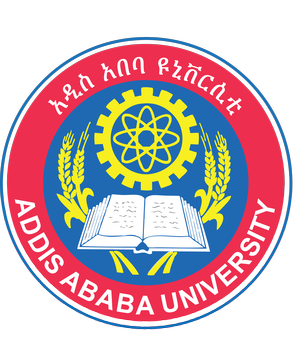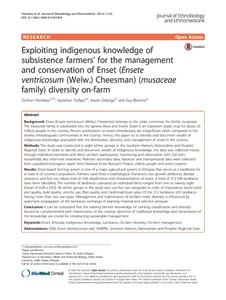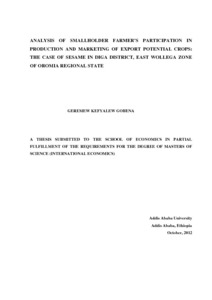Location
Addis Ababa University (AAU), which was established in 1950 as the University College of Addis Ababa (UCAA), is the oldest and the largest higher learning and research institution in Ethiopia. Since its inception, the University has been the leading center in teaching-learning, research and community services.
Beginning with enrollment capacity of 33 students in 1950, AAU now has 48,673 students (33,940 undergraduate, 13,000 Master’s and 1733 PhD students) and 6043 staff (2,408 academics and 3,635 support staff). In its 14 campuses, the University runs 70 undergraduate and 293 graduate programs (72 PhD and 221 Masters), and various specializations in Health Sciences.
Over 222,000 students have graduated from AAU since its establishment.
Members:
Resources
Displaying 6 - 10 of 20Exploiting indigenous knowledge of subsistence farmers’ for the management and conservation of Enset (Ensete ventricosum (Welw.) Cheesman) (musaceae family) diversity on-farm
Enset (Ensete ventricosum (Welw.) Cheesman) belongs to the order sctaminae, the family musaceae. The Musaceae family is subdivided into the genera Musa and Ensete. Enset is an important staple crop for about 20 million people in the country. Recent publications on enset ethnobotany are insignificant when compared to the diverse ethnolingustic communities in the country. Hence, this paper try to identify and document wealth of indigenous knowledge associated with the distribution, diversity, and management of enset in the country.
The IPBES Conceptual Framework — connecting nature and people
The first public product of the Intergovernmental Platform on Biodiversity and Ecosystem Services (IPBES) is its Conceptual Framework. This conceptual and analytical tool, presented here in detail, will underpin all IPBES functions and provide structure and comparability to the syntheses that IPBES will produce at different spatial scales, on different themes, and in different regions.
Understanding runoff generation processes and rainfall runoff modeling: The case of Meja Watershed in the Upper Blue Nile Basin Ethiopia
Runoff estimation and water management for Holetta River, Awash subbasin, Ethiopia
Analysis of smallholder farmer’s participation in production and marketing of export potential crops: The case of sesame in Diga district, east Wollega zone of Oromia Regional State
Agriculture in Ethiopia remains to be the key sector. It is still the main source of foreign exchange earnings (up to 90%) and the largest labour force employer (about 83%). Of the total agricultural output, about 95% was covered by smallholder agriculture sub-sector. However, a number of factors limit smallholder farmers from participating in export potential cash crops. The main objective of this paper is to identify household specific factors determining sesame production and marketing participation.






